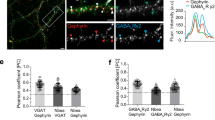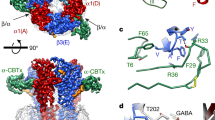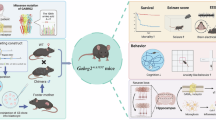Abstract
Methyl-CpG-binding protein 2 (MeCP2) is a ubiquitously expressed transcriptional regulator with functional importance in the central nervous system. Loss-of-function mutations in MECP2 results in the neurodevelopmental disorder, Rett syndrome, whereas increased expression levels are associated with the neurological disorder, MECP2 duplication syndrome. Previous characterization of a mouse line overexpressing Mecp2 demonstrated that this model recapitulated key behavioral features of MECP2 duplication syndrome with specific deficits in synaptic plasticity and neurotransmission. Alterations in excitation/inhibition balance have been suggested to underlie neurodevelopmental disorders with recent data suggesting that picrotoxin (PTX), a GABAA receptor antagonist, rescues certain behavioral and synaptic phenotypes in a mouse model of Down syndrome. We therefore examined whether a similar treatment regimen would impact the behavioral and synaptic phenotypes in a mouse model of MECP2 duplication syndrome. We report that chronic treatment with low doses of PTX ameliorates specific behavioral phenotypes, including motor coordination, episodic memory impairments, and synaptic plasticity deficits. These findings suggest that GABAA receptor antagonists may offer a possible therapeutic target for the treatment of MECP2 duplication syndrome.
Similar content being viewed by others
Log in or create a free account to read this content
Gain free access to this article, as well as selected content from this journal and more on nature.com
or
References
Abel T, Lattal KM (2001). Molecular mechanisms of memory acquisition, consolidation and retrieval. Curr Opin Neurobiol 11: 180–187.
Akhtar MW, Kim MS, Adachi M, Morris MJ, Qi X, Richardson JA et al (2012). In vivo analysis of MEF2 transcription factors in synapse regulation and neuronal survival. PLoS One 7: e34863.
Amir RE, Van den Veyver IB, Wan M, Tran CQ, Francke U, Zoghbi HY (1999). Rett syndrome is caused by mutations in X-linked MECP2, encoding methyl-CpG-binding protein 2. Nat Genet 23: 185–188.
Asaka Y, Jugloff DG, Zhang L, Eubanks JH, Fitzsimonds RM (2006). Hippocampal synaptic plasticity is impaired in the Mecp2-null mouse model of Rett syndrome. Neurobiol Dis 21: 217–227.
Bevins RA, Besheer J (2006). Object recognition in rats and mice: a one-trial non-matching-to-sample learning task to study 'recognition memory'. Nat Protoc 1: 1306–1311.
Broadbent NJ, Gaskin S, Squire LR, Clark RE (2010). Object recognition memory and the rodent hippocampus. Learn Mem 17: 5–11.
Calfa G, Hablitz JJ, Pozzo-Miller L (2011). Network hyperexcitability in hippocampal slices from Mecp2 mutant mice revealed by voltage-sensitive dye imaging. J Neurophysiol 105: 1768–1784.
Chao HT, Zoghbi HY, Rosenmund C (2007). MeCP2 controls excitatory synaptic strength by regulating glutamatergic synapse number. Neuron 56: 58–65.
Chubykin AA, Atasoy D, Etherton MR, Brose N, Kavalali ET, Gibson JR et al (2007). Activity-dependent validation of excitatory versus inhibitory synapses by neuroligin-1 versus neuroligin-2. Neuron 54: 919–931.
Collins AL, Levenson JM, Vilaythong AP, Richman R, Armstrong DL, Noebels JL et al (2004). Mild overexpression of MeCP2 causes a progressive neurological disorder in mice. Hum Mol Genet 13: 2679–2689.
Dani VS, Chang Q, Maffei A, Turrigiano GG, Jaenisch R, Nelson SB (2005). Reduced cortical activity due to a shift in the balance between excitation and inhibition in a mouse model of Rett syndrome. Proc Natl Acad Sci USA 102: 12560–12565.
del Gaudio D, Fang P, Scaglia F, Ward PA, Craigen WJ, Glaze DG et al (2006). Increased MECP2 gene copy number as the result of genomic duplication in neurodevelopmentally delayed males. Genet Med 8: 784–792.
Fernandez F, Morishita W, Zuniga E, Nguyen J, Blank M, Malenka RC et al (2007). Pharmacotherapy for cognitive impairment in a mouse model of Down syndrome. Nat Neurosci 10: 411–413.
Friez MJ, Jones JR, Clarkson K, Lubs H, Abuelo D, Bier JA et al (2006). Recurrent infections, hypotonia, and mental retardation caused by duplication of MECP2 and adjacent region in Xq28. Pediatrics 118: e1687–e1695.
Hagberg B, Aicardi J, Dias K, Ramos O (1983). A progressive syndrome of autism, dementia, ataxia, and loss of purposeful hand use in girls: Rett's syndrome: report of 35 cases. Ann Neurol 14: 471–479.
Jiang M, Ash RT, Baker SA, Suter B, Ferguson A, Park J et al (2013). Dendritic arborization and spine dynamics are abnormal in the mouse model of MECP2 duplication syndrome. J Neurosci 33: 19518–19533.
Kim MS, Akhtar MW, Adachi M, Mahgoub M, Bassel-Duby R, Kavalali ET et al (2012). An essential role for histone deacetylase 4 in synaptic plasticity and memory formation. J Neurosci 32: 10879–10886.
Kleschevnikov AM, Belichenko PV, Faizi M, Jacobs LF, Htun K, Shamloo M et al (2012). Deficits in cognition and synaptic plasticity in a mouse model of Down’s syndrome ameliorated by GABAB receptor antagonists. J Neurosci 32: 9217–9227.
Lewis JD, Meehan RR, Henzel WJ, Maurer-Fogy I, Jeppesen P, Klein F et al (1992). Purification, sequence, and cellular localization of a novel chromosomal protein that binds to methylated DNA. Cell 69: 905–914.
Luikenhuis S, Giacometti E, Beard CF, Jaenisch R (2004). Expression of MeCP2 in postmitotic neurons rescues Rett syndrome in mice. Proc Natl Acad Sci USA 101: 6033–6038.
McGaugh JL, Castellano C, Brioni J (1990). Picrotoxin enhances latent extinction of conditioned fear. Behav Neurosci 104: 264–267.
Meins M, Lehmann J, Gerresheim F, Herchenbach J, Hagedorn M, Hameister K et al (2005). Submicroscopic duplication in Xq28 causes increased expression of the MECP2 gene in a boy with severe mental retardation and features of Rett syndrome. J Med Genet 42: e12.
Moretti P, Levenson JM, Battaglia F, Atkinson R, Teague R, Antalffy B et al (2006). Learning and memory and synaptic plasticity are impaired in a mouse model of Rett syndrome. J Neurosci 26: 319–327.
Morris MJ, Mahgoub M, Na ES, Pranav H, Monteggia LM (2013). Loss of histone deacetylase 2 improves working memory and accelerates extinction learning. J Neurosi 33: 6401–6411.
Na ES, Nelson ED, Adachi M, Autry AE, Mahgoub MA, Kavalali ET et al (2012). A mouse model for MeCP2 duplication syndrome: MeCP2 overexpression impairs learning and memory and synaptic transmission. J Neurosci 32: 3109–3117.
Nelson ED, Bal M, Kavalali ET, Monteggia LM (2011). Selective impact of MeCP2 and associated histone deacetylases on the dynamics of evoked excitatory neurotransmission. J Neurophysiol 106: 193–201.
Nelson ED, Kavalali ET, Monteggia LM (2006). MeCP2-dependent transcriptional repression regulates excitatory neurotransmission. Curr Biol 16: 710–716.
Pananceau M, Chen HX, Gustafsson B (1997). Long-term potentiation induced by single volley activation: a mechanism for bicuculline-induced enhancement of synaptic field potentials in the CA1 hippocampal region. Neuroscience 79: 95–101.
Ramocki MB, Peters SU, Tavyev YJ, Zhang F, Carvalho CM, Schaaf CP et al (2009). Autism and other neuropsychiatric symptoms are prevalent in individuals with MeCP2 duplication syndrome. Ann Neurol 66: 771–782.
Ramocki MB, Tavyev YJ, Peters SU (2010). The MECP2 duplication syndrome. Am J Med Genet A 152A: 1079–1088.
Ramwell PW, Shaw JE (1965). The effect of picrotoxin on motor activity and the electroencephalogram of mice. Br J Pharmacol Chemother 24: 651–658.
Robleto K, Poulos AM, Thompson RF (2004). Brain mechanisms of extinction of the classically conditioned eyeblink response. Learn Mem 11: 517–524.
Turrigiano G (2007). Homeostatic signaling: the positive side of negative feedback. Curr Opin Neurobiol 17: 318–324.
Turrigiano GG, Nelson SB (2000). Hebb and homeostasis in neuronal plasticity. Curr Opin Neurobiol 10: 358–364.
Van Esch H, Bauters M, Ignatius J, Jansen M, Raynaud M, Hollanders K et al (2005). Duplication of the MECP2 region is a frequent cause of severe mental retardation and progressive neurological symptoms in males. Am J Hum Genet 77: 442–453.
Zhang L, He J, Jugloff DG, Eubanks JH (2008). The MeCP2-null mouse hippocampus displays altered basal inhibitory rhythms and is prone to hyperexcitability. Hippocampus 18: 294–309.
Acknowledgements
This work was supported by National Institute of Health grant MH081060 (LMM) and a NARSAD Independent Investigator Award (ESN). We thank Dr Rudolf Jaenisch for generously providing the Tau-Mecp2 mice. We would also like to thank Elizabeth Gordon for assistance with breeding of the Tau-Mecp2 line. We would like to acknowledge Drs Ege Kavalali and Megumi Adachi for discussions and comments on the manuscript.
Author information
Authors and Affiliations
Corresponding author
Rights and permissions
About this article
Cite this article
Na, E., Morris, M., Nelson, E. et al. GABAA Receptor Antagonism Ameliorates Behavioral and Synaptic Impairments Associated with MeCP2 Overexpression. Neuropsychopharmacol 39, 1946–1954 (2014). https://doi.org/10.1038/npp.2014.43
Received:
Revised:
Accepted:
Published:
Issue date:
DOI: https://doi.org/10.1038/npp.2014.43
This article is cited by
-
Neonatal inflammation increases hippocampal KCC2 expression through methylation-mediated TGF-β1 downregulation leading to impaired hippocampal cognitive function and synaptic plasticity in adult mice
Journal of Neuroinflammation (2023)
-
Hippocampal Transcriptome Profile of Persistent Memory Rescue in a Mouse Model of THRA1 Mutation-Mediated Resistance to Thyroid Hormone
Scientific Reports (2016)
-
Imbalance of excitatory/inhibitory synaptic protein expression in iPSC-derived neurons from FOXG1+/− patients and in foxg1+/− mice
European Journal of Human Genetics (2016)
-
Dynamic methylation driven by neuronal activity in hippocampal neurons impacts complex behavior
Frontiers in Biology (2015)
-
Rescue of Methyl-CpG Binding Protein 2 Dysfunction-induced Defects in Newborn Neurons by Pentobarbital
Neurotherapeutics (2015)



